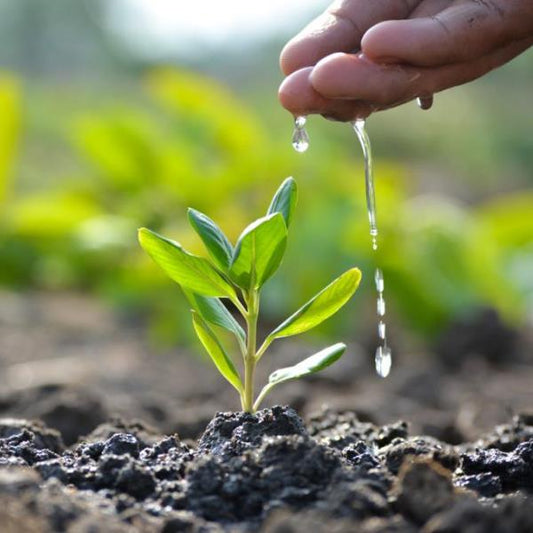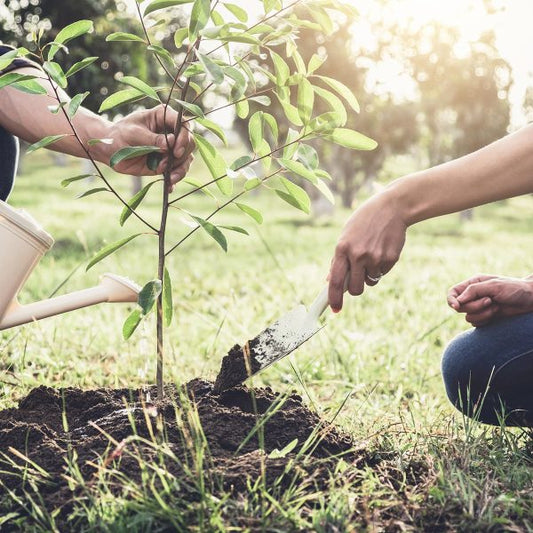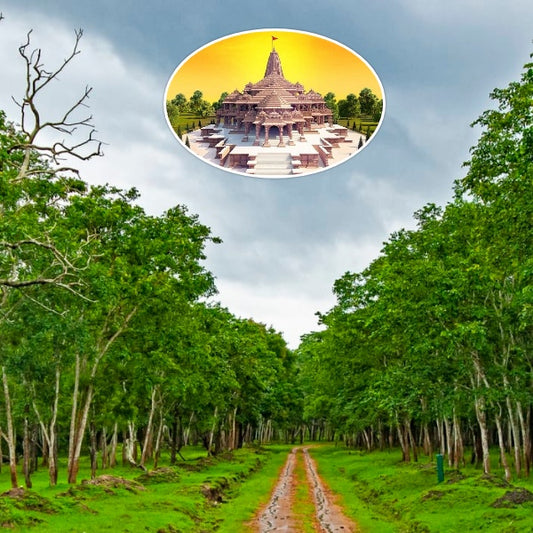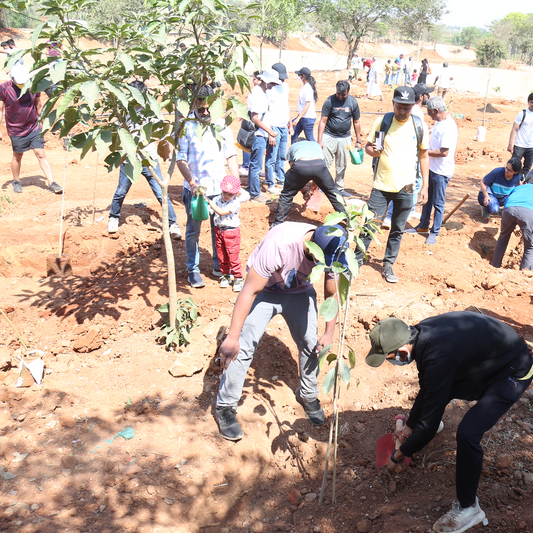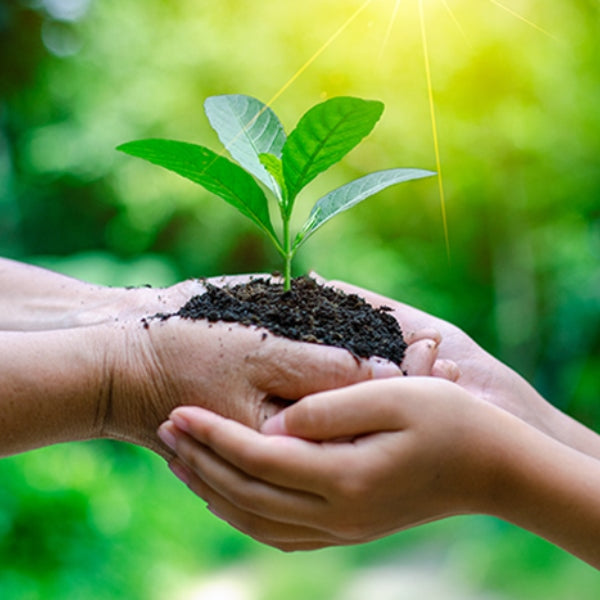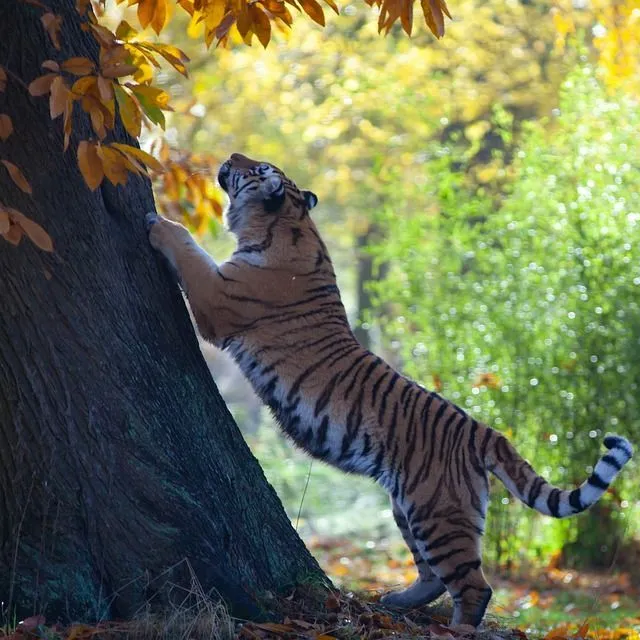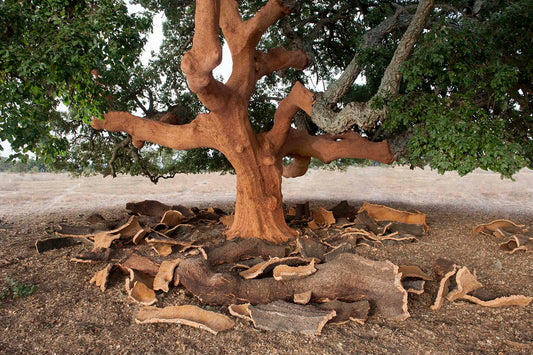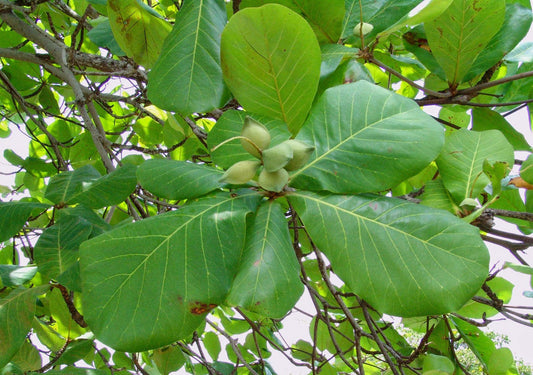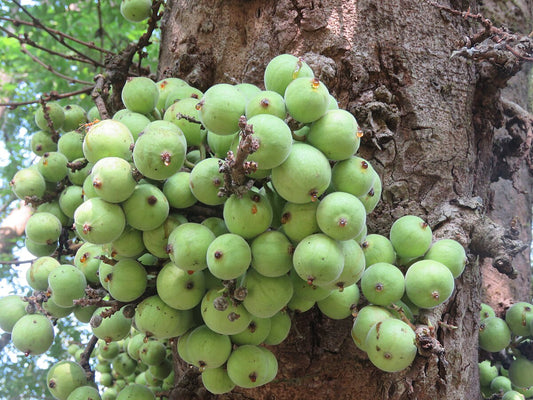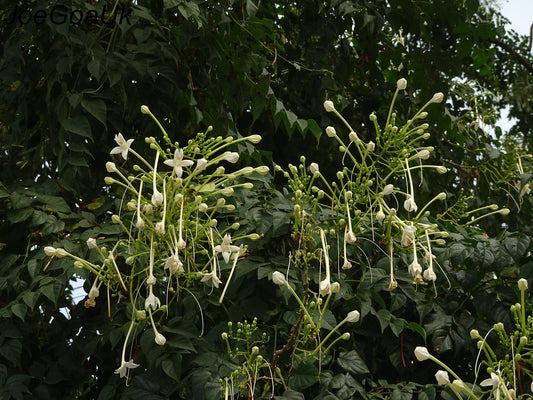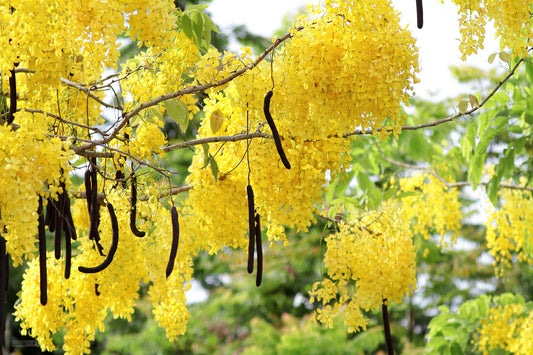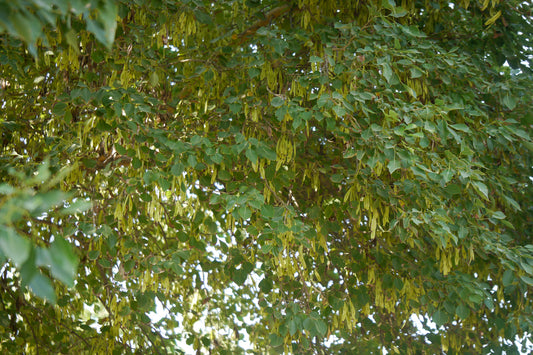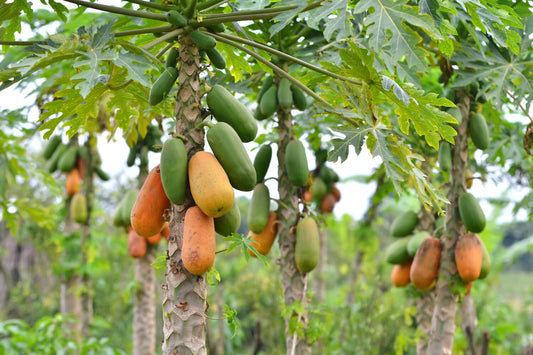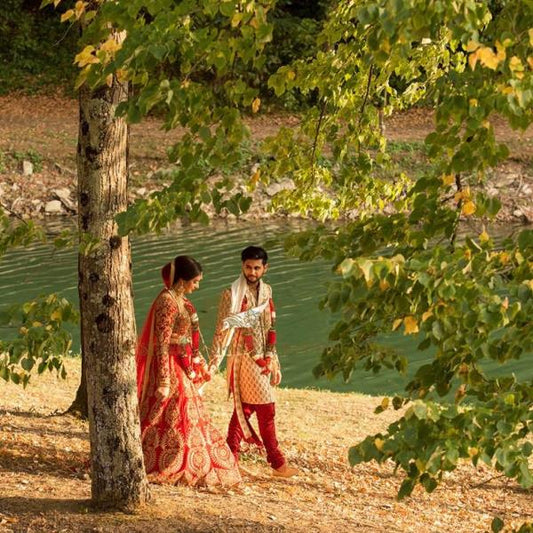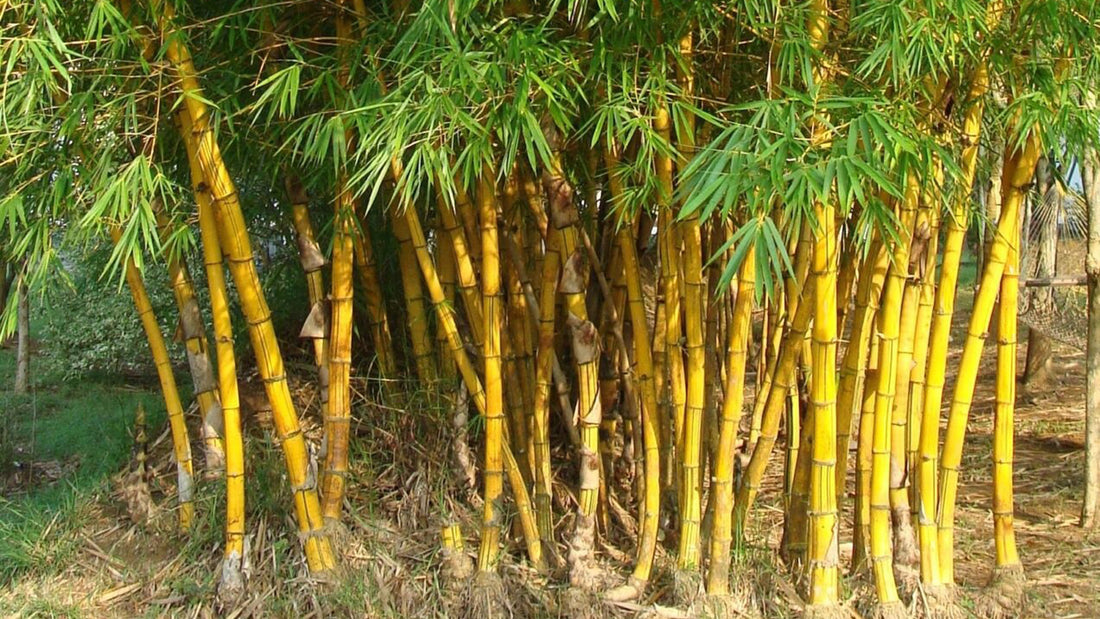

Did you know that bamboo is one of the fastest-growing plants on Earth, with some species capable of growing up to 91 cm (35 inches) in a single day? Bamboo has captivated humanity for centuries, serving as an essential resource with multifaceted applications. From its historical significance to its Read more
Trending
Trees for Corporates
Bamboo Tree
Did you know that bamboo is one of the fastest-growing plants on Earth, with some species capable of growing up to 91 cm (35 inches) in a single day?
Bamboo has captivated humanity for centuries, serving as an essential resource with multifaceted applications. From its historical significance to its modern-day sustainability initiatives, bamboo continues to weave its way into various aspects of our lives. Let's delve into the world of bamboo through this comprehensive listicle.
Taxonomy and Botanical Features
Bamboo belongs to the family Poaceae, subfamily Bambusoideae, and encompasses over 1,600 species. This grass family member is characterized by its tall, woody stems (culms) and fast growth rates. Bamboos are classified into two main types: clumping and running. The former tends to stay in tight clusters, while the latter spreads through underground rhizomes, sometimes making them invasive.
Historical and Cultural Significance
Throughout history, bamboo has been deeply intertwined with various cultures worldwide. In Asia, particularly in China and Japan, bamboo symbolizes strength, flexibility, and resilience. It has been utilized in architecture, art, and even as a writing surface. In South America, indigenous communities have used bamboo for centuries for construction and crafting tools. Moreover, bamboo has spiritual significance in some cultures, representing longevity and prosperity.
Medicinal Properties and Traditional Uses
Traditional medicine systems across Asia have long utilized bamboo for its medicinal properties. Bamboo shoots are rich in nutrients and are consumed in many Asian cuisines. Additionally, bamboo extracts have been used to treat various ailments, including fevers, inflammation, and infections. In some cultures, bamboo charcoal is employed for its detoxifying properties in skincare and water purification.
Agricultural Applications
Bamboo's rapid growth and versatility make it an attractive option for sustainable agriculture. It can be cultivated in a variety of climates and soil types, requiring minimal maintenance and no pesticides. Bamboo serves as a valuable resource for erosion control, soil stabilization, and watershed protection. Moreover, its extensive root system helps prevent landslides and soil erosion in hilly terrains.
Modern Scientific Research
Contemporary scientific research has shed light on the diverse properties of bamboo. Studies have explored its potential in carbon sequestration, with bamboo forests acting as significant carbon sinks. Additionally, researchers are investigating bamboo's applications in sustainable construction materials, bioenergy production, and even as a source of fibers for textiles and paper production.
Environmental Impact and Sustainability
Bamboo is hailed as one of the most sustainable resources on the planet due to its rapid growth and minimal environmental footprint. Unlike hardwood trees, which can take decades to mature, bamboo reaches maturity in just a few years. Its extensive root system helps prevent soil erosion and promotes biodiversity. Furthermore, bamboo cultivation requires little water and no chemical fertilizers or pesticides, making it an eco-friendly alternative to traditional crops.
Economic Importance
The global bamboo industry is thriving, with a wide range of products contributing to various sectors. Bamboo's versatility lends itself to numerous applications, including construction materials, furniture, textiles, and even food products. Moreover, bamboo cultivation provides livelihoods for millions of people worldwide, particularly in rural and developing regions.
Conservation Status and Future Prospects
While bamboo is abundant in many parts of the world, certain species face threats due to habitat loss and overexploitation. Conservation efforts are underway to protect endangered bamboo species and preserve their ecosystems. Additionally, there is growing recognition of bamboo's potential in mitigating climate change and promoting sustainable development. Investing in bamboo cultivation and conservation holds promise for both environmental and economic benefits in the future.
Conclusion
In conclusion, bamboo stands as a remarkable example of nature's ingenuity and resilience. From its historical and cultural significance to its modern-day applications, bamboo continues to inspire awe and admiration worldwide. As we navigate the challenges of sustainability and environmental conservation, bamboo emerges as a beacon of hope, offering sustainable solutions for a brighter future.
Incorporating bamboo into various aspects of our lives not only promotes ecological balance but also fosters economic prosperity and cultural diversity. By harnessing the potential of this versatile plant, we can pave the way towards a more sustainable and harmonious coexistence with nature. Let us embrace the wonders of bamboo and work towards a greener, more sustainable future for generations to come.
United States Department of Agriculture (USDA): https://www.usda.gov/topics/food-and-nutrition
Food and Agriculture Organization of the United Nations (FAO): http://www.fao.org/forestry/bamboo/en/
International Network for Bamboo and Rattan (INBAR): https://www.inbar.int/
You may also like
Corporate Plantations
Bamboo Tree Facts
Explore fascinating facts about the Bamboo tree, one of the fastest-growing plants on Earth known for its versatility, strength, and sustainability. Learn about its diverse species, unique growth patterns, and cultural significance worldwide.
Bamboo Tree Species
Delve into the various species of Bamboo trees, which belong to the family Poaceae and are classified into over 1,500 genera. Discover the wide range of Bamboo species, each with its distinct characteristics and uses, from towering giants to delicate ornamentals.
Bamboo Tree Growth Habit
Learn about the growth habit of Bamboo trees, characterized by their rapid growth and woody stems called culms. Explore how Bamboo culms emerge from underground rhizomes and can reach their full height within a single growing season.
Bamboo Tree Uses
Explore the diverse uses of Bamboo trees across cultures and industries. From construction materials and furniture to textiles and paper, Bamboo has been utilized for millennia for its strength, flexibility, and sustainability.
Bamboo Tree Cultivation
Gain insights into Bamboo tree cultivation practices, including propagation, planting, and maintenance. Discover how Bamboo cultivation methods vary depending on species and intended use, from clump-forming Bamboos for landscaping to running Bamboos for privacy screens.
Bamboo Tree Ecology
Delve into the ecological role of Bamboo trees in forest ecosystems. From stabilizing soil and preventing erosion to providing habitat and food for wildlife, Bamboo plays a vital role in maintaining biodiversity and ecosystem balance.
Bamboo Tree Economic Importance
Explore the economic significance of Bamboo trees in various industries, including construction, agriculture, and manufacturing. Discover how Bamboo products contribute to local economies and sustainable development initiatives worldwide.
Bamboo Tree Sustainability
Learn about the environmental benefits of Bamboo cultivation for sustainable resource management. From carbon sequestration and soil conservation to water purification and renewable energy production, Bamboo offers numerous advantages for mitigating climate change and promoting ecosystem health.
Bamboo Tree Cultural Symbolism
Discover the cultural symbolism and spiritual significance of Bamboo trees in different cultures and traditions. From representing resilience and flexibility to symbolizing prosperity and longevity, Bamboo holds deep cultural meanings and values around the world.
Bamboo Tree Medicinal Uses
Explore the medicinal properties of Bamboo trees in traditional medicine systems. From using Bamboo shoots and leaves for treating fevers and infections to utilizing extracts for skincare and haircare remedies, Bamboo has been valued for its therapeutic benefits for centuries.
Bamboo Tree Art and Craftsmanship
Learn about the artistic and craft uses of Bamboo materials in traditional handicrafts and artisanal products. From weaving baskets and mats to carving sculptures and musical instruments, Bamboo has inspired creative expression and cultural heritage worldwide.
Bamboo Tree Forest Management
Understand the importance of sustainable Bamboo forest management practices for conserving biodiversity and supporting local livelihoods. Explore approaches such as selective harvesting, rotational cutting, and agroforestry integration to ensure the long-term health and productivity of Bamboo ecosystems.
Bamboo Tree Climate Resilience
Discover how Bamboo trees contribute to climate resilience and adaptation in vulnerable regions. From providing shade and microclimate regulation to enhancing soil moisture retention and flood control, Bamboo plays a crucial role in building resilient communities and landscapes.
Bamboo Tree Culinary Delights
Learn about the culinary uses of Bamboo shoots, a nutritious and versatile ingredient in Asian cuisines. Explore traditional recipes and cooking methods for preparing Bamboo shoots in soups, stir-fries, salads, and pickles.
Bamboo Tree Urban Landscaping
Explore the use of Bamboo trees in urban landscaping and green infrastructure projects. From street plantings and park design to rooftop gardens and green walls, Bamboo offers aesthetic beauty, shade, and biodiversity benefits in urban environments.
Bamboo Tree Research and Innovation
Discover research initiatives and innovative applications of Bamboo in fields such as biotechnology, bioengineering, and sustainable design. Explore how Bamboo's unique properties are being harnessed for new materials, products, and technologies.
Bamboo Tree Invasive Species Management
Learn about the challenges of invasive Bamboo species and strategies for their management and control. Explore methods such as containment barriers, mechanical removal, and biological control to prevent the spread of invasive Bamboos and protect native ecosystems.
Bamboo Tree Symbol of Green Living
Understand Bamboo's role as a symbol of green living and sustainable lifestyles. Explore how Bamboo embodies principles of environmental responsibility, resource efficiency, and cultural harmony, inspiring individuals and communities to adopt eco-friendly practices.
Bamboo Tree International Trade
Explore the global trade in Bamboo products and its socio-economic implications for producing and consuming countries. Learn about the opportunities and challenges of Bamboo trade, including market demand, quality standards, and fair trade practices.
Bamboo Tree Future Prospects
Gain insights into the future prospects of Bamboo cultivation and utilization in a rapidly changing world. Explore emerging trends such as Bamboo-based biofuels, carbon markets, and eco-tourism initiatives, shaping the sustainable development agenda for Bamboo resources.
FAQ
What is a Bamboo tree?
The Bamboo tree, scientifically known as Bambusoideae, is a fast-growing, woody perennial plant belonging to the grass family Poaceae. Renowned for its strength, versatility, and rapid growth, Bamboo holds cultural, ecological, and economic significance worldwide.
Where are Bamboo trees commonly found?
Bamboo trees are commonly found in various regions across Asia, Africa, the Americas, and Oceania. They thrive in diverse habitats, including forests, mountains, and tropical jungles, where they play essential roles in ecosystem functioning and provide valuable resources for human use.
What are the characteristics of Bamboo trees?
Bamboo trees are characterized by their tall, slender culms (stems), which are segmented into nodes and internodes. They have lanceolate leaves arranged in alternating patterns along the culms and develop rhizomatous root systems that facilitate rapid spread and growth.
How tall do Bamboo trees grow?
Bamboo trees can vary widely in height depending on the species and growing conditions, with some species reaching heights of 10-30 meters (33-98 feet) or more. They exhibit remarkable growth rates, with some species capable of growing several centimeters per day under optimal conditions.
What is the scientific name of the Bamboo tree?
The scientific name of the Bamboo tree is Bambusoideae, belonging to the family Poaceae. The subfamily Bambusoideae includes over 1,400 species of Bamboo distributed across various genera, including Bambusa, Phyllostachys, and Dendrocalamus.
When do Bamboo trees produce shoots?
Bamboo trees typically produce new shoots, or culms, during the spring and summer months, with peak growth occurring in warm, humid climates. The emergence of new shoots is triggered by environmental cues such as temperature, rainfall, and daylight duration.
How to care for Bamboo trees?
To care for Bamboo trees, plant them in well-drained soil in a location with partial to full sunlight, depending on the species. Provide regular watering, especially during the dry season or periods of prolonged drought, and fertilize annually with balanced fertilizer to promote healthy growth.
What are the benefits of planting Bamboo trees?
Planting Bamboo trees offers several benefits, including providing renewable resources for construction, furniture-making, and handicrafts, sequestering carbon dioxide and mitigating climate change, and stabilizing soil and preventing erosion in vulnerable landscapes.
Are Bamboo trees suitable for urban environments?
Bamboo trees are well-suited for urban environments, where they provide shade, beauty, and habitat for urban wildlife. They are often planted in parks, gardens, and green spaces, where their resilience and adaptability to urban conditions are appreciated.
How to propagate Bamboo trees?
Bamboo trees can be propagated from seeds, rhizome divisions, or culm cuttings. Collect mature seeds from flowering Bamboo plants and sow them in containers filled with well-drained potting mix. Alternatively, divide mature clumps of Bamboo rhizomes or take culm cuttings from healthy, mature plants and root them in water or potting mix.
What are the common pests and diseases affecting Bamboo trees?
Common pests affecting Bamboo trees include aphids, mealybugs, and scale insects, while diseases such as Bamboo rust, root rot, and Bamboo mosaic virus can also occur. Proper monitoring and integrated pest management practices can help prevent and manage pest and disease problems.
Can Bamboo trees tolerate drought?
Bamboo trees have good drought tolerance once established but benefit from regular watering, especially during the establishment phase and periods of prolonged drought. Mulching around the base of the plants helps retain soil moisture and regulate soil temperature, promoting healthy growth and resilience.
How long does it take for a Bamboo tree to mature?
The time it takes for a Bamboo tree to mature varies depending on the species and growing conditions. Some Bamboo species may reach maturity within 3-5 years, while others may take longer, with culms reaching their full size and diameter over subsequent growing seasons.
Are Bamboo trees deciduous or evergreen?
Bamboo trees can be either deciduous or evergreen, depending on the species and environmental conditions. Many Bamboo species are evergreen, retaining their leaves year-round, while some may shed leaves seasonally in response to environmental cues such as drought or cold temperatures.
Can Bamboo trees be grown in pots?
Bamboo trees are well-suited for container cultivation, especially dwarf or clumping Bamboo species that are smaller in size and less invasive. Choose a large container with drainage holes, fill it with well-drained potting mix, and place the Bamboo in a location with partial to full sunlight for optimal growth.
What is the significance of Bamboo trees in landscaping?
Bamboo trees are prized in landscaping for their ornamental value, structural diversity, and ecological benefits. They are often used as privacy screens, windbreaks, or focal points in gardens, parks, and landscapes, where their graceful form and versatility add beauty and functionality to the design.
Are Bamboo trees invasive?
Some Bamboo species can be invasive in certain regions, particularly running Bamboo species with aggressive rhizome systems that spread rapidly and colonize new areas. Careful selection of Bamboo species and containment measures such as root barriers can help prevent the spread of invasive Bamboo species and protect native ecosystems.
How do you prune a Bamboo tree?
Prune Bamboo trees as needed to remove dead, damaged, or overgrown culms and thin out crowded areas to promote air circulation and light penetration. Use clean, sharp pruning tools and make cuts just above the node to encourage new growth and maintain the desired shape and size of the plant.
What is the lifespan of a Bamboo tree?
The lifespan of a Bamboo tree can vary depending on species, growing conditions, and management practices.
Most Popular
Connect with us
-
👥 Corporates
If you are looking for:
- 🌲 Tree Plantation Events
- 📊 CSR Projects
📧 corporate@growbilliontrees.com
📞 +91 9699723523
💬 WhatsApp (Only): +91 9370599291
🕒 Mon - Sat | 10am - 7pm IST
-
🧩 Tree Plantation NGOs
If you are looking for:
- 💰 Financial Assistance
- 🤝 Operational Support
📧 support@growbilliontrees.com
📞 +91 9699723523
💬 WhatsApp (Only): +91 9370599291
🕒 Mon - Sat | 10am - 7pm IST
-
🌼 Individuals
If you are looking for:
- 👥 Group Tree Plantation Drive
- 🌳 Bulk Tree Plantation
📞 +91 9699723523
💬 WhatsApp (Only): +91 9370599291
🕒 Mon - Sat | 10am - 7pm IST



